We’d like to remind Forumites to please avoid political debate on the Forum.
This is to keep it a safe and useful space for MoneySaving discussions. Threads that are – or become – political in nature may be removed in line with the Forum’s rules. Thank you for your understanding.
The MSE Forum Team would like to wish you all a very Happy New Year. However, we know this time of year can be difficult for some. If you're struggling during the festive period, here's a list of organisations that might be able to help
📨 Have you signed up to the Forum's new Email Digest yet? Get a selection of trending threads sent straight to your inbox daily, weekly or monthly!
Has MSE helped you to save or reclaim money this year? Share your 2025 MoneySaving success stories!
DIY Stable Renovation: Need Your Advice and Ideas!
Comments
-
I plan to install a ceiling beneath the rafters, possibly using thin plywood. However, I'm not focusing too much on the interior at the moment—I'll likely address that next year or the year after!ThisIsWeird said:Q - are you keeping the inside vaulted?
Especially if not, I would personally look to building up the rafters with plenty of noggins - nice easy clean work, carried out from a scaffold - and place the sheets on this; I just don't see the point of OSB on top, unless you're going to make it part of an insulted upper roof.
You certainly aren't going to be screwing the metal sheets to the OSB - it ain't strong enough - so you'd have to target the rafters and noggins in any case.
But i can also see why that decision is crucial now.
1 -
One thing you need to consider is snow loading - OK, pretty rare that we get much snow at present south of the border, but if you are up in the hills of Wales or Yorkshire it still happens.sujsuj said:
Okay, so these trusses/horizontal rafters are only suitable for bitumen felt. I hadn't considered that—thanks for pointing it out. I plan to visit a DIY shop and try this out before making a final decision. Since I only weigh 65kg, so may be a thinner sheet OK..?FreeBear said:A 2.4 x 1.2m sheet of 11mm OSB is about 20Kg - Fairly easy to slide around, although I wouldn't want to try picking up a sheet on my own (got a slipped disc). With the two of you, it should be manageable. 2.4m is the longest sheet you can get off the shelf, so you'll need to cut a few down. If you stagger the joints, you can get away with using two shorter lengths that will be easier to handle.In its current form, you don't have many trusses, and the horizontal rafters are spread quite some distance apart. If you go for thinner sheets, there is a very real risk they will fail as you move around on them. Even with 11m sheets, I'm of the opinion that you need more trusses and rafters.
Any language construct that forces such insanity in this case should be abandoned without regrets. –
Erik Aronesty, 2014
Treasure the moments that you have. Savour them for as long as you can for they will never come back again.1 -
sujsuj said:
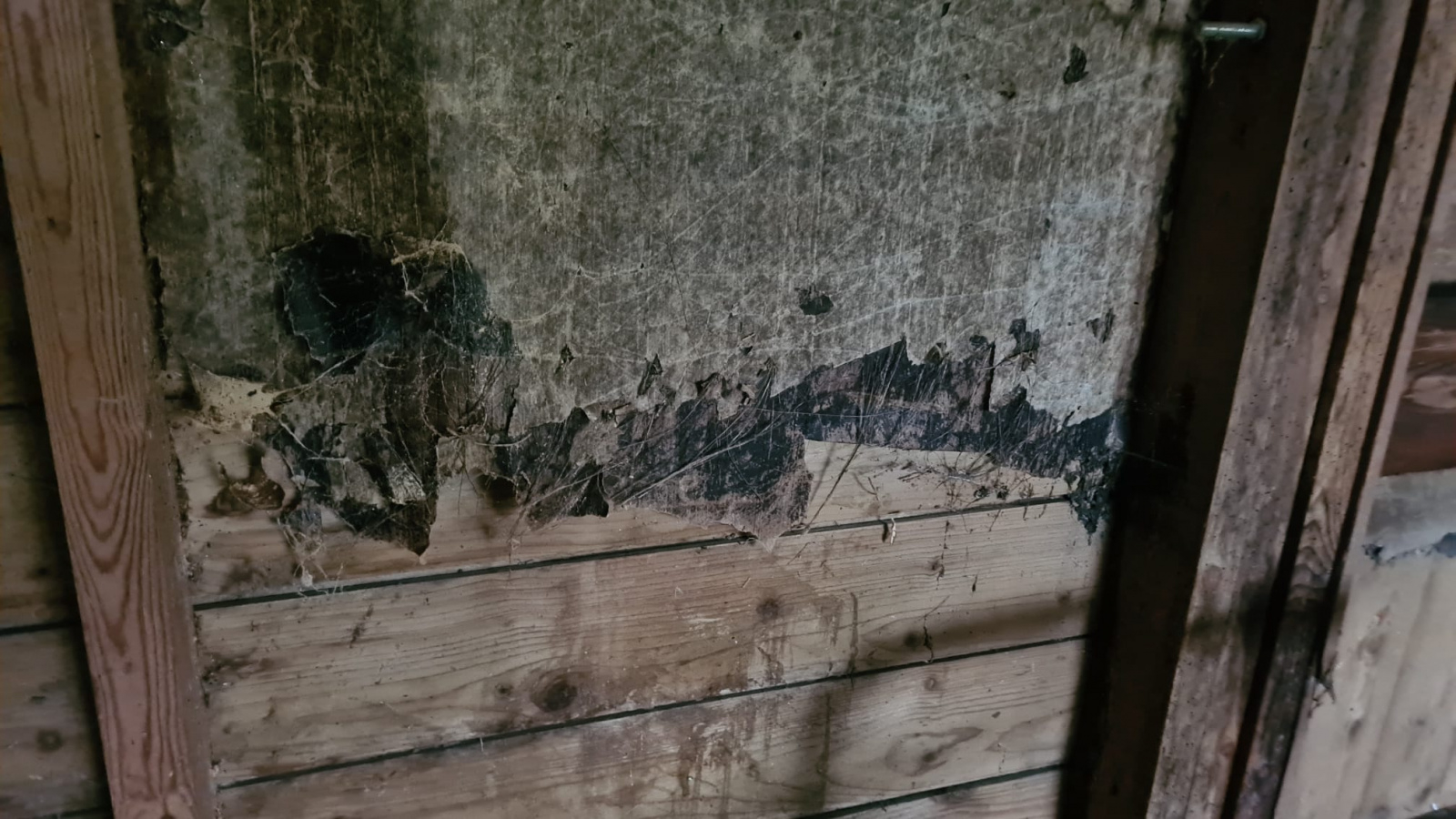
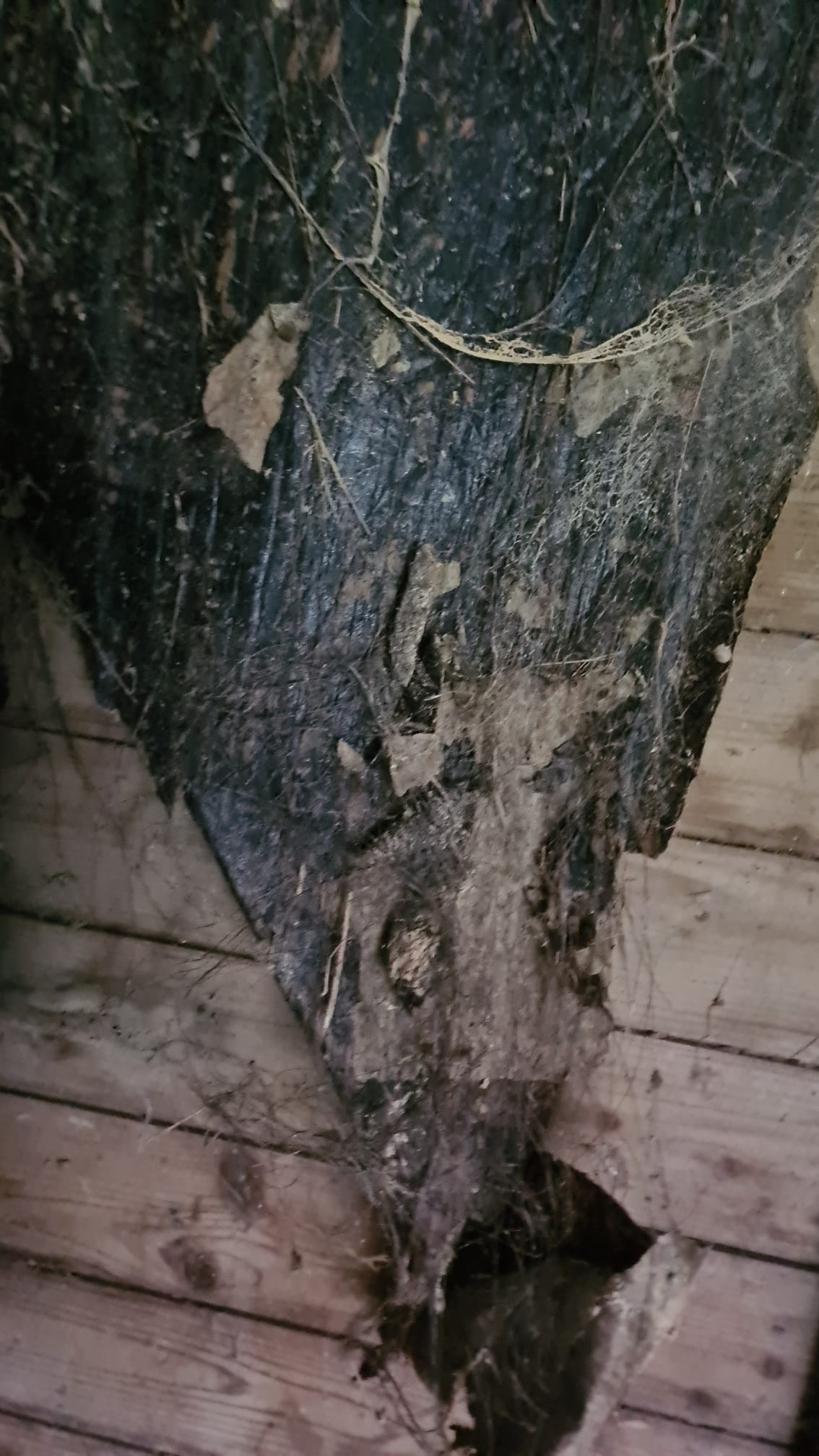 Only just seen this pic. Ok, so the roof rafters are currently covered in sarking boards? I just can't see any reason to add OSB to that. But I'm happy to be corrected.IF you are ultimately going to be adding a flat ceiling inside, then that's where you place your insulation. Not point at all in adding any to the pitched roof - it's likely to just cause trapped moisture and rot, certainly if you get it wrong.The basic idea is, your outer roof covering is like an umbrella - it simply stops the rain getting through. Underneath this brolly/roof will be cold, windy, but dry.So, the roof void should be rainproof but draughty = dry.Then you insulate the inner shell, from the new ceiling downwards.1
Only just seen this pic. Ok, so the roof rafters are currently covered in sarking boards? I just can't see any reason to add OSB to that. But I'm happy to be corrected.IF you are ultimately going to be adding a flat ceiling inside, then that's where you place your insulation. Not point at all in adding any to the pitched roof - it's likely to just cause trapped moisture and rot, certainly if you get it wrong.The basic idea is, your outer roof covering is like an umbrella - it simply stops the rain getting through. Underneath this brolly/roof will be cold, windy, but dry.So, the roof void should be rainproof but draughty = dry.Then you insulate the inner shell, from the new ceiling downwards.1 -
Your ceiling will be a layer of rigid insulation board - Celotex/Kinsgpan - fitted to the joist underside, and then a decorative layer - you can use ply if you want it bash-proof, or normal p'board should be ok.sujsuj said:I plan to install a ceiling beneath the rafters, possibly using thin plywood. However, I'm not focusing too much on the interior at the moment—I'll likely address that next year or the year after!
But i can also see why that decision is crucial now.
1 -
I don't think that light grey will suit it at all.
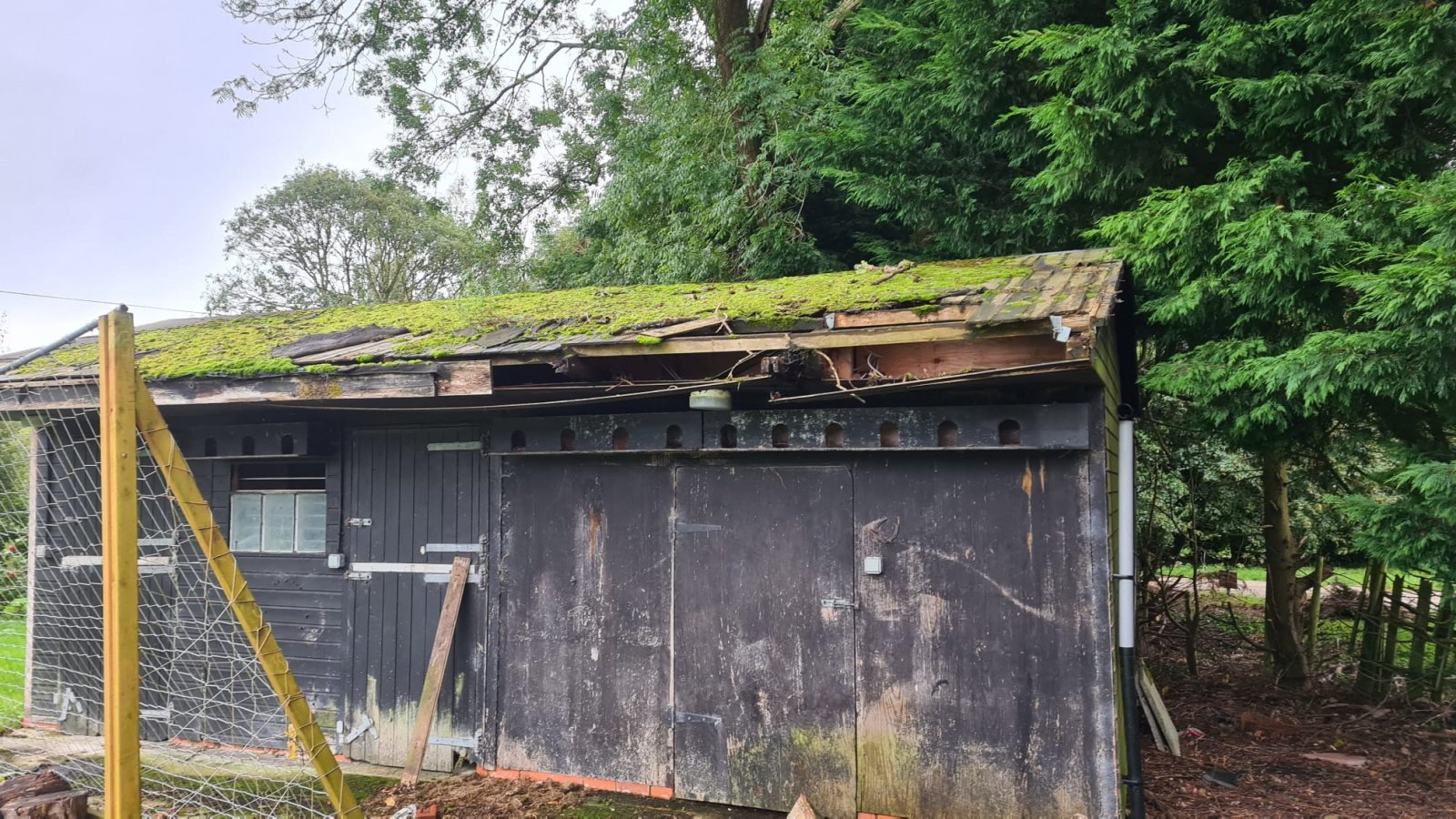 However, if that stable is in the corner of your plot - is that your boundary behind it? - then no reason at all not to use the stuff on the rear roof slope, and also the back and LH sides, where it won't normally be seen.Make the front look spesh :-)1
However, if that stable is in the corner of your plot - is that your boundary behind it? - then no reason at all not to use the stuff on the rear roof slope, and also the back and LH sides, where it won't normally be seen.Make the front look spesh :-)1 -
I know these examples have a lot of glass - that ain't the point - but it shows the way golden timber and charcoal go together.
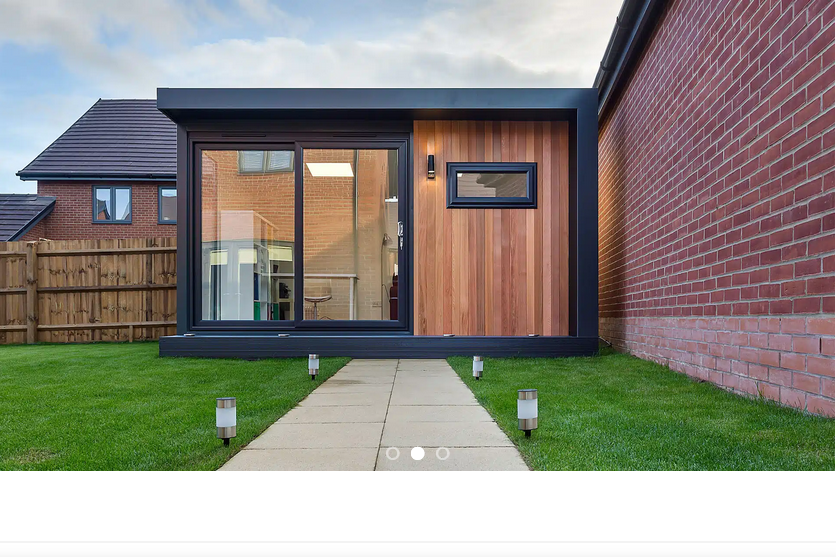
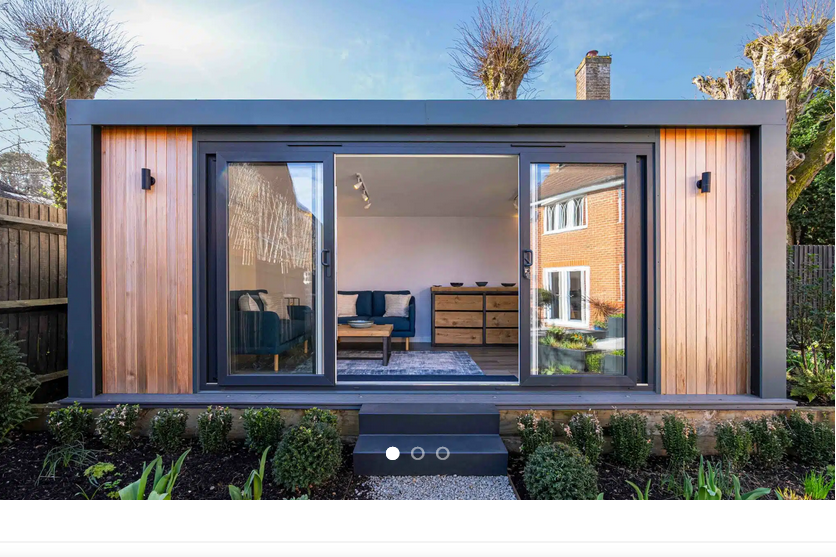 1
1 -
ThisIsWeird said:sujsuj said:Only just seen this pic. Ok, so the roof rafters are currently covered in sarking boards? I just can't see any reason to add OSB to that. But I'm happy to be corrected.Think you are looking at walls rather than the roof there?The first pictures in the thread show the current roof covering is knackered. sujsuj could do as he did with the garage and replace individual planks, but in terms of time and cost it will be better to strip the roof and redo it with OSB3.As I said upthread - the steel sheets need something underneath them to deal with the issue of condensation. 12mm OSB3 would be an ideal choice as it has some strength as well as providing a flat surface for the steel sheets to be laid on. The steel could be fixed direct to the purlins without using OSB3 but then the only strength is from the steel sheeting itself, and it doesn't stand up well to people walking around on it unless the purlin spacing is close enough. The number of OSB3 sheets needed to cover that roof is small, so the cost is not going to be vast compared to the cost of the steel and all the other materials going into the project.... so really the question ought to be why wouldn't you give the steel the additional support and condensation protection that the OSB3 (or something else) would provide?Alternatively the OSB3 could be omitted if the steel is laid on 50mm or 75mm Celotex, but for a DIY project it is probably safer to have some kind of timber product in there as well.sujsuj said:
I suppose the insulation, like Celotex boards or something similar, should be installed from the inside after the roofing is completed, correct?ThisIsWeird said:
Ah, good point - so remove old roofing, and then insulate and sheet on top of rafters, then metal roofing?Section62 said:It needs something under the steel - it is much easier taking whatever it is (e.g. insulation/OSB/polythene) over the purlin and fixing through it, rather than cutting whatever it is to fit between the purlins and then working out a way of fixing it in place. Continuity over the purlins also helps with keeping the wet on the outside, and looks much neater. (and this is why roofing screws are available in very long lengths).No. If you re-read my earlier post - the bit TIW quoted above - it is better to put the sheets (insulation/OSB/polythene) on top of the purlins because that way the sheet materials (a) are supported by the purlins with no need for additional support; (b) help to support the steel sheeting; and ( c ) it is much easier to fit them on top of the purlins rather than try cutting them to fit between purlins/rafters.You want to end up with a sandwich of steel-polythene-insulation-OSB3 because that will be much stiffer (and better at carrying loads) than the steel on its own.2 -
FreeBear said:
One thing you need to consider is snow loading - OK, pretty rare that we get much snow at present south of the border, but if you are up in the hills of Wales or Yorkshire it still happens.sujsuj said:
Okay, so these trusses/horizontal rafters are only suitable for bitumen felt. I hadn't considered that—thanks for pointing it out. I plan to visit a DIY shop and try this out before making a final decision. Since I only weigh 65kg, so may be a thinner sheet OK..?FreeBear said:A 2.4 x 1.2m sheet of 11mm OSB is about 20Kg - Fairly easy to slide around, although I wouldn't want to try picking up a sheet on my own (got a slipped disc). With the two of you, it should be manageable. 2.4m is the longest sheet you can get off the shelf, so you'll need to cut a few down. If you stagger the joints, you can get away with using two shorter lengths that will be easier to handle.In its current form, you don't have many trusses, and the horizontal rafters are spread quite some distance apart. If you go for thinner sheets, there is a very real risk they will fail as you move around on them. Even with 11m sheets, I'm of the opinion that you need more trusses and rafters....also wind loading. More of an issue with a mono-pitch roof, but nevertheless wind can easily lift lightweight roof structures off the building they are fitted to and dump them in someone else's garden.With big doors in the building you also need to consider what will happen if there were a big gust of wind while the doors are open.1 -
Section62 said:(1) Think you are looking at walls rather than the roof there?As I said upthread - the steel sheets need something underneath them to deal with the issue of condensation. 12mm OSB3 would be an ideal choice as it has some strength as well as providing a flat surface for the steel sheets to be laid on. The steel could be fixed direct to the purlins without using OSB3 but then the only strength is from the steel sheeting itself, and it doesn't stand up well to people walking around on it unless the purlin spacing is close enough. The number of OSB3 sheets needed to cover that roof is small, so the cost is not going to be vast compared to the cost of the steel and all the other materials going into the project.... so really the question ought to be why wouldn't you give the steel the additional support and condensation protection that the OSB3 (or something else) would provide?(2) it is better to put the sheets (insulation/OSB/polythene) on top of the purlins because that way the sheet materials (a) are supported by the purlins with no need for additional support; (b) help to support the steel sheeting; and ( c ) it is much easier to fit them on top of the purlins rather than try cutting them to fit between purlins/rafters.(1) Eek! There is felt covering the walls! Yuck
 (2) If SS is going to instal a ceiling as he says, then I'd insulate that, and leave the loft void draughty and uninsulated.The ceiling will also help guard against updraughts. Perhaps his choice of sheeting is super-light (thin), but I clad a lean-to a few years back, and just added extra noggins to the existing sloping joists. They were beefy, tho' - 4x2 I recall. But I just used joist hangers, and it made it a nice easy clean task, standing with body popping through joists at waist level, and not climbing over them.Ditto with the metal sheeting - should be no risk of damage if crawling over them, as long as a crawling board of some sort is used.Yes, adding OSB or whatevs is beltandbraces, but a lot more work and cost, over and above the noggins which are required in any case, and it's a potential rot trap.That is not a huge building - I, personally, would not bother.0
(2) If SS is going to instal a ceiling as he says, then I'd insulate that, and leave the loft void draughty and uninsulated.The ceiling will also help guard against updraughts. Perhaps his choice of sheeting is super-light (thin), but I clad a lean-to a few years back, and just added extra noggins to the existing sloping joists. They were beefy, tho' - 4x2 I recall. But I just used joist hangers, and it made it a nice easy clean task, standing with body popping through joists at waist level, and not climbing over them.Ditto with the metal sheeting - should be no risk of damage if crawling over them, as long as a crawling board of some sort is used.Yes, adding OSB or whatevs is beltandbraces, but a lot more work and cost, over and above the noggins which are required in any case, and it's a potential rot trap.That is not a huge building - I, personally, would not bother.0 -
If we're still talking about the same thing then it is an anti-damp membrane, sometimes known as 'building paper'. It was cheap, and looked Ok when new, but invariably tears and degrades to look like what sujsuj has.ThisIsWeird said:(1) Eek! There is felt covering the walls! Yuck
The point is that even if the roof void is left draughty and uninsulated, condensation on the underside of the steel sheets will still be a problem. It is just the nature of a sheet steel roof - it needs something directly underneath it to deal with the problem. Anti-condensation felt is one option, the other is to insulate it. But the insulating layer(s) have to be in close contact with the steel - the important thing here is it is the steel which needs to be insulated, not the room/space below. The aim is to increase the thermal mass of the roof.ThisIsWeird said:(2) If SS is going to instal a ceiling as he says, then I'd insulate that, and leave the loft void draughty and uninsulated.The ceiling will also help guard against updraughts. Perhaps his choice of sheeting is super-light (thin), but I clad a lean-to a few years back, and just added extra noggins to the existing sloping joists. They were beefy, tho' - 4x2 I recall. But I just used joist hangers, and it made it a nice easy clean task, standing with body popping through joists at waist level, and not climbing over them.
Not a good idea to use crawling boards on coated steel sheet (although from a safety POV better than walking on them if the installation was bodged without enough support for the sheeting). The surface finish is prone to damage, and if it gets damaged it will be the start of rusting and/or debonding of the finish. Humping crawling boards around a roof is hassle vs doing the job properly in the first place. On a fragile roof (e.g. asbestos-cement) crawling boards are necessary because excess point-load will fracture the sheet - the crawling board spreads the load. But properly supported steel sheeting doesn't require their use.ThisIsWeird said:Ditto with the metal sheeting - should be no risk of damage if crawling over them, as long as a crawling board of some sort is used.ThisIsWeird said:Yes, adding OSB or whatevs is beltandbraces, but a lot more work and cost, over and above the noggins which are required in any case, and it's a potential rot trap.If used as I'm suggesting it is the opposite of a 'rot trap'. The OSB3 (or other boarding) creates a plane surface that the polythene can be laid over. The polythene acts as a damp membrane, so no water can come down from above. The idea is to keep water out of the building in the first place. The plane impermeable surface means any leakage or condensation will run down the roof and into the gutter (or outside the eaves).If the steel is fitted direct to purlins (note: not noggins) without using a membrane then the inevitable condensation will drip onto the timber roof structure, and the 'ceiling', and that would be a potential cause of rot.2
Confirm your email address to Create Threads and Reply

Categories
- All Categories
- 353K Banking & Borrowing
- 253.9K Reduce Debt & Boost Income
- 454.8K Spending & Discounts
- 246.1K Work, Benefits & Business
- 602.2K Mortgages, Homes & Bills
- 177.8K Life & Family
- 260K Travel & Transport
- 1.5M Hobbies & Leisure
- 16K Discuss & Feedback
- 37.7K Read-Only Boards



